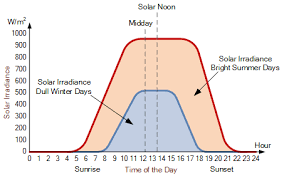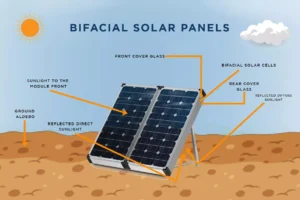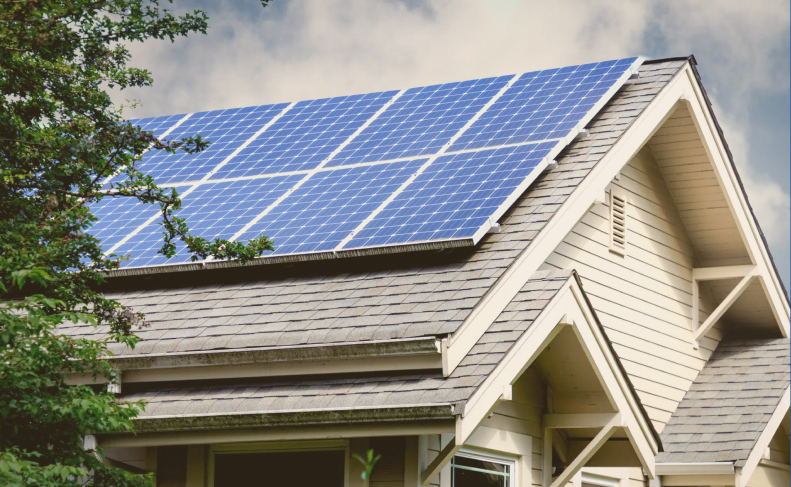And being true ambassadors of the #Apna Desh Apni Bijli movement, we have created this article. It is a snapshot of all the latest changes the government has made to simplify solar installation for homeowners. Government is simplifying the net metering and subsidy on solar panel systems.
We’ve also walked the extra mile to gather the never-spoken-of-before modifications in the govt subsidy on solar, expected to be launched soon!
Link: https://amdual.com/solar/
Subsidy On Solar Panel Systems — Is 2024 the Best Time To Benefit From the Solar Panel Government Subsidy Scheme?
The latest reforms in solar subsidy policy and subsidy rates have made 2024 the most beneficial year to install solar systems.
| Old solar panel government subsidy rates in 2023 | New rates for subsidy on solar panel systems* |
| For 1-3 kW systems: ₹14,588 per kW | For 1-2 kW systems: ₹30,000 to ₹60,000 |
| Above 3 kW and up to 10 kW systems: – ₹14,588 per kW up to 3 kW – After that, ₹7,294 per kW up to 10 kW | For 3 kW systems: ₹78,000 (₹60,000 for 1st 2 kW and ₹18,000 for the remaining 1 kW) The rates of govt subsidy on solar under the new scheme will be capped at ₹78,000 for systems above 3 kW when the average monthly electricity consumption will be more than 300 units. |
*Please note: The new solar panel government subsidy rates will be applicable only for applications filed on the National Portal for Rooftop Solar on or after February 13th, 2024.
Let’s simplify further with an example of old and new subsidy rates for 1 kW, 2 kW, 3 kW, and 5kW solar systems
| System size | Old rates for govt subsidy on solar panel systems | New subsidy rates (for applications filed on or before February 13, 2024) |
| 1 kW | ₹14,588 | ₹30,000 |
| 2 kW | ₹29,176 | ₹60,000 |
| 3 kW | ₹43,764 | ₹78,000 |
| 5 kW | ₹58,352 | ₹78,000 |
Special Considerations: Higher Solar Subsidy for Some States
For Uttar Pradesh:
The Uttar Pradesh state government offers additional financial assistance on top of the subsidy on solar panel systems offered by the central government.
Here’s what this means for the residents of UP:
- Central government’s subsidy on solar panel systems:
- – For 1-2 kW systems: ₹30,000 to ₹60,000
- – ₹18,000 per kW for additional capacity up to 3 kW
- State government’s additional subsidy on solar panel systems: ₹15,000 per kW, capped at ₹30,000
For Delhi
Very recently, the Delhi government announced an additional solar subsidy on top of what the central government offers.
Here’s what the Kejriwal government has in mind for the residents of Delhi installing rooftop solar systems at their homes:
- Central government’s subsidy on solar panel systems:
- – For 1-2 kW systems: ₹30,000 to ₹60,000
- – ₹18,000 per kW for additional capacity up to 3 kW
- State government’s additional subsidy on solar panel systems: ₹2,000 per kW, capped at ₹10,000
For further clarity, let’s take the example of the solar panel government subsidy offered on rooftop solar systems in UP and Delhi, vs other states.
| States | Govt subsidy on solar for a 2 kW system | Govt subsidy on solar for a 3 kW system | Govt subsidy on solar for a 5 kW system |
| Uttar Pradesh (UP) | Subsidy by the central government – ₹60,000 Subsidy by the state government – ₹30,000 Total subsidy in 2024 – ₹90,000 | Subsidy by the central government – ₹78,000 Subsidy by the state government – ₹30,000 Total subsidy in 2024 – ₹1,08,000 | Subsidy by the central government – ₹78,000 Subsidy by the state government – ₹30,000 Total subsidy in 2024 – ₹1,08,000 |
| Delhi | Subsidy by the central government – ₹60,000 Subsidy by the state government – ₹4,000 Total subsidy in 2024 – ₹64,000 | Subsidy by the central government – ₹78,000 Subsidy by the state government – ₹6,000 Total subsidy in 2024 – ₹84,000 | Subsidy by the central government – ₹78,000 Subsidy by the state government – ₹10,000 Total subsidy in 2024 – ₹88,000 |
| Other states | Subsidy by the central government – ₹60,000 Subsidy by the state government – NIL Total solar panel government subsidy in 2024 – ₹60,000 | Subsidy by the central government – ₹78,000 Subsidy by the state government – NIL Total solar panel government subsidy in 2024 – ₹78,000 | Subsidy by the central government – ₹78,000 Subsidy by the state government – NIL Total solar panel government subsidy in 2024 – ₹78,000 |
Simplification of Solar Installation and Net Metering System Installation in 2024
Unlike before, the process of installing home solar panels has become a lot less cumbersome. Net Metering system is helping customers long term by installing solar systems.
Solar Installation Application: Earlier vs 2024
We’ve drawn this past vs now table that’ll help you understand how applying for solar has become more straightforward in 2024.
| Aspect | Past | Now, in 2024 |
| Application approval | Post application submission, discom officials carried out a technical feasibility inspection | Technical feasibility inspection clause to approve the system installation application no longer applies to solar systems up to 10 kW for residential projects |
| Installation commencement | Could begin only after the concerned discom official approved the application | As soon as the application is registered on the National Portal for Rooftop Solar, the work begins |
Net Metering System Installation Process: Earlier vs 2024
Earlier, a lot of paperwork was involved in installing the net metering meter, also known as the bi-directional meter. Now, the scenario has changed a lot. Government is simplifying the net metering and subsidy on solar panel systems
Here’s a table that’ll give you a clearer picture of how the installation of the bi-directional meter has become simpler in 2024.
| Aspect | Earlier | In 2024 |
| Required documentation | Every state had different requirements. The common documents that every state required for technical feasibility and net meter commissioning included – a). A copy of the electricity bill b). Aadhar card c). Property/housing tax receipt d). Passport size photo The paperwork became further complicated during the net metering system installation in case of a name mismatch. | For technical feasibility inspection — any electricity bill from the last 6 months and the Aadhar card For project commissioning – A copy of the project completion report, a photograph of the solar system installed, and the consumer-vendor agreement |
| Bi-directional meter installation timeline | Approximately 60 days after the submission of the net metering application | Within 30 working days after the submission of the net metering meter installation application |
Did you know?
The timeline from load enhancement to plant commissioning has greatly reduced in some states.
Let’s give you a clearer picture!
| State/City | Project completion time from load enhancement to plant commissioning – Earlier | Project completion time from load enhancement to plant commissioning – in 2024 |
| Karnataka | Approximately 68 days | Within 56 days |
| Jabalpur | Approximately 53 days | Within 29 days |
| Indore | Approximately 41 days | Within 29 days |
| Bhopal | Approximately 41 days | Within 25 days |
Future Changes Suggested by the Government to Make Solar Installation Completely Hassle-free
The idea behind having a single portal to apply for solar installation or to introduce flat subsidy on solar panel systems was to reduce confusion and hassles when installing home solar panels.
Every amendment by the government was to simplify the installation of solar systems at home. Following the same footsteps, the government has suggested the following few amends.
- Consumers will only have to register on the National Portal for Rooftop Solar and upload the work completion report. Besides this, maximum steps will come under the scope of either the discom or the installation company
- Technical feasibility inspection will be entirely removed for residential installations up to 10 kW nationwide
A Bangalore Case Study!
Let’s give you an example of how the Karnataka government has proposed some amends for Bengaluru that, when implemented, will simplify the net metering process even more.
- From the time of submitting the work completion report on the National Portal for Rooftop Solar, the entire project completion should take no more than 150 days
- After submitting the work completion report, the discom inspection must be completed within 5 days. If this deadline gets missed, the concerned officer has to pay a fine of 1,000 rupees per day
Please note: these timelines will vary from discom to discom and state to state.
A Jaipur Case Study!
When talking about popularizing solar in India, the pink city, Jaipur, isn’t behind. Government is simplifying the net metering and subsidy on solar panel systems
Here’s how the Rajasthan government plans to make solar installation quicker and easier for homeowners in Jaipur –
- Earlier, it used to take approximately 80 days for the entire project execution after the Work Completion Report was successfully submitted on the National Portal for Rooftop Solar. According to the new suggestions made by the Rajasthan government, the plan is to bring this timeline down to just 18 days
Today, over 5 lakh Indian households have already installed rooftop solar systems. On top of this, PM Modi has announced a new scheme, the ‘Pradhanmantri Suryodaya Yojana’, to solarize 1 crore homes!
Customers will also get ₹18,000 relaxation for additional capacity up to 3 kW. This means that earlier the govt subsidy on solar for 3 kW systems which was just ₹43,764 has been increased to ₹78,000 under the new solar subsidy scheme in 2024.
It’s also worth noting that the subsidy on solar panel systems is now capped at ₹78,000 for systems above 3 kW.
Link: https://pmsuryaghar.gov.in/







